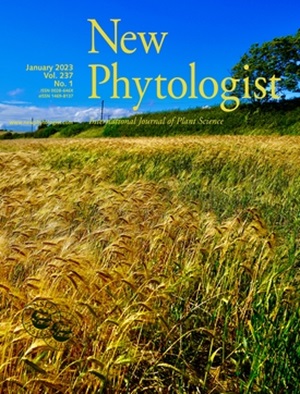A critical reassessment of the novel weapons hypothesis and allelopathy as an adaptive strategy that facilitates plant invasion.
IF 8.1
1区 生物学
Q1 PLANT SCIENCES
引用次数: 0
Abstract
Plants have evolved an assortment of chemical adaptations that integrate environmental cues with developmental processes to regulate growth and reproduction. A subset of these phytochemicals may be considered allelopathic adaptations if they enhance fitness by suppressing competition for limiting resources. Despite compelling critiques by John Harper almost a half century ago, research on allelopathy nonetheless experienced a revival at the turn of the 21st century that gave rise to a 'novel weapons hypothesis' (NWH) to explain plant invasions. We briefly review the storied history of allelopathy and apply a systematic literature review to scrutinize the NWH from an eco-evolutionary perspective. Although it remains a highly influential metaphor, we find confused definitions and insufficient empirical evidence to support the NWH. Channeling Harper's original critiques, we propose that research on the NWH - and allelopathy more generally - would benefit from field experiments that causally link plant chemistry and competitive interactions to resource availability, fitness components, and population growth. We introduce a set of postulates to help address confusion over definitions and guide empirical tests of the causal processes linking plant chemistry to competitive outcomes, adaptive evolution, and the structure of plant communities.对新武器假说和化感作用作为促进植物入侵的适应性策略的重要重新评估。
植物已经进化出各种各样的化学适应,将环境因素与发育过程结合起来,调节生长和繁殖。如果这些植物化学物质的一个子集通过抑制对有限资源的竞争来增强适应性,则可能被认为是化感适应。尽管约翰·哈珀在近半个世纪前就提出了令人信服的批评,但对化感作用的研究在21世纪之交经历了一次复兴,引发了一种解释植物入侵的“新武器假说”(NWH)。我们简要回顾了化感作用的历史,并从生态进化的角度对西北湿地进行了系统的文献回顾。虽然它仍然是一个非常有影响力的比喻,但我们发现混淆的定义和缺乏经验证据来支持NWH。根据哈珀最初的批评,我们建议对NWH的研究——以及更广泛的化感作用——将受益于将植物化学和竞争相互作用与资源可用性、适应性成分和人口增长因果联系起来的实地实验。我们引入了一组假设,以帮助解决定义上的困惑,并指导植物化学与竞争结果、适应性进化和植物群落结构之间因果过程的实证检验。
本文章由计算机程序翻译,如有差异,请以英文原文为准。
求助全文
约1分钟内获得全文
求助全文
来源期刊

New Phytologist
生物-植物科学
自引率
5.30%
发文量
728
期刊介绍:
New Phytologist is an international electronic journal published 24 times a year. It is owned by the New Phytologist Foundation, a non-profit-making charitable organization dedicated to promoting plant science. The journal publishes excellent, novel, rigorous, and timely research and scholarship in plant science and its applications. The articles cover topics in five sections: Physiology & Development, Environment, Interaction, Evolution, and Transformative Plant Biotechnology. These sections encompass intracellular processes, global environmental change, and encourage cross-disciplinary approaches. The journal recognizes the use of techniques from molecular and cell biology, functional genomics, modeling, and system-based approaches in plant science. Abstracting and Indexing Information for New Phytologist includes Academic Search, AgBiotech News & Information, Agroforestry Abstracts, Biochemistry & Biophysics Citation Index, Botanical Pesticides, CAB Abstracts®, Environment Index, Global Health, and Plant Breeding Abstracts, and others.
 求助内容:
求助内容: 应助结果提醒方式:
应助结果提醒方式:


